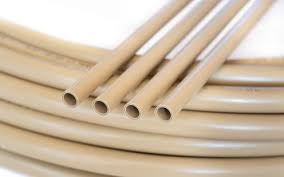Dec . 25, 2024 04:07 Back to list
ppr pipe price product
Understanding PPR Pipe Pricing and Its Market Dynamics
PPR (Polypropylene Random Copolymer) pipes have gained significant popularity in recent years for various applications, including plumbing, heating, and cooling systems. The demand for PPR pipes has surged due to their durability, resistance to corrosion, and excellent thermal insulation properties. As a result, understanding the pricing dynamics of PPR pipes becomes essential for consumers, contractors, and industry stakeholders.
What Influences PPR Pipe Prices?
Several factors contribute to the pricing of PPR pipes, including material costs, manufacturing processes, market demand, and geographic variations
. Here’s a more detailed look at these influences1. Raw Material Costs The primary raw material for manufacturing PPR pipes is polypropylene, which is a petroleum-based product. Fluctuations in oil prices can directly affect the cost of polypropylene and, consequently, the overall price of PPR pipes. When crude oil prices rise, the production costs for manufacturers increase, which can lead to higher prices for consumers.
2. Manufacturing and Production Processes The efficiency of manufacturing processes used by PPR pipe producers also plays a significant role in pricing. Advanced technologies that optimize production and reduce waste can lower operational costs. Manufacturers who invest in state-of-the-art equipment can often pass these savings onto consumers, leading to competitive pricing in the market.
3. Geographic Variations Prices for PPR pipes can vary significantly based on geographic locations due to transportation costs, local demand and supply dynamics, and regional market conditions. For instance, in areas where construction is booming, the demand for plumbing materials like PPR pipes may far exceed supply, resulting in higher prices. Conversely, in regions with less construction activity, prices may be lower.
4. Market Demand and Supply As with any commodity, the fundamentals of supply and demand will largely dictate the pricing of PPR pipes. Increased construction activity, government infrastructure projects, and the ever-growing interest in sustainable building materials can lead to higher demand for PPR pipes, thus increasing prices. Additionally, if supply is disrupted due to production issues or transportation challenges, this can lead to price spikes.
5. Quality and Brand Reputation Not all PPR pipes are created equal. Pipes with higher quality standards, certifications, and endorsements from reputable organizations may command a higher price. Brands that have established trust in the market for their reliability and performance can often set premium pricing for their products.
ppr pipe price product

How to Navigate PPR Pipe Pricing
For consumers and contractors looking to purchase PPR pipes, understanding these factors can aid in making informed purchasing decisions. Here are some tips
- Research Multiple Suppliers Prices can vary widely among different suppliers. It’s prudent to obtain quotes from several sources to gauge the market rate and find the best deals.
- Focus on Quality While it may be tempting to go for the lowest price, it’s essential to consider the long-term implications of choosing lower-quality products. Investing in high-quality PPR pipes can result in fewer repairs and replacements over time, thereby saving money in the long run.
- Stay Informed About Market Trends Keeping an eye on the trends in raw material prices, particularly oil, can help anticipate changes in PPR pipe pricing. Awareness of broader economic factors can also provide insights into potential price movements.
- Consider Bulk Purchases For contractors or larger projects, buying PPR pipes in bulk can lead to significant savings. Many suppliers offer discounts for larger orders, so negotiating for a bulk purchase can be beneficial.
Conclusion
The pricing of PPR pipes is influenced by a complex interplay of factors, including raw material costs, manufacturing processes, geographic variations, and market dynamics. By understanding these elements, consumers and industry professionals can make well-informed choices that not only meet their immediate needs but also secure long-term value. As the demand for sustainable and durable piping solutions continues to grow, staying informed about PPR pipe pricing will remain crucial for all stakeholders in the construction and plumbing sectors.
-
High-Quality PVC Borehole Pipes Durable & Versatile Pipe Solutions
NewsJul.08,2025
-
High-Quality PVC Perforated Pipes for Efficient Drainage Leading Manufacturers & Factories
NewsJul.08,2025
-
High-Quality PVC Borehole Pipes Durable Pipe Solutions by Leading Manufacturer
NewsJul.08,2025
-
High-Quality PVC Borehole Pipes Reliable PVC Pipe Manufacturer Solutions
NewsJul.07,2025
-
High-Quality UPVC Drain Pipes Durable HDPE & Drain Pipe Solutions
NewsJul.07,2025
-
High-Quality Conduit Pipes & HDPE Conduit Fittings Manufacturer Reliable Factory Supply
NewsJul.06,2025

